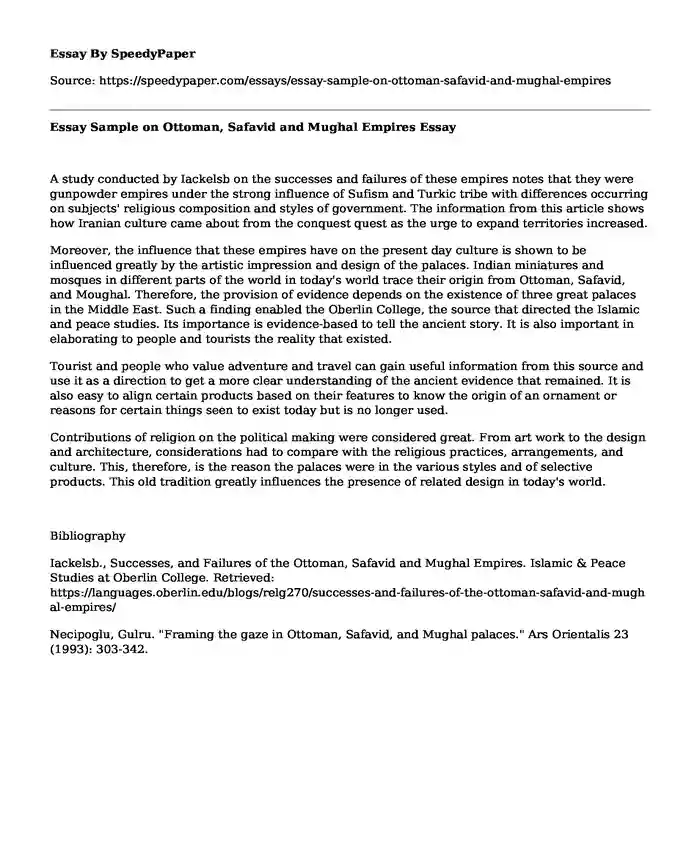A study conducted by Iackelsb on the successes and failures of these empires notes that they were gunpowder empires under the strong influence of Sufism and Turkic tribe with differences occurring on subjects' religious composition and styles of government. The information from this article shows how Iranian culture came about from the conquest quest as the urge to expand territories increased.
Moreover, the influence that these empires have on the present day culture is shown to be influenced greatly by the artistic impression and design of the palaces. Indian miniatures and mosques in different parts of the world in today's world trace their origin from Ottoman, Safavid, and Moughal. Therefore, the provision of evidence depends on the existence of three great palaces in the Middle East. Such a finding enabled the Oberlin College, the source that directed the Islamic and peace studies. Its importance is evidence-based to tell the ancient story. It is also important in elaborating to people and tourists the reality that existed.
Tourist and people who value adventure and travel can gain useful information from this source and use it as a direction to get a more clear understanding of the ancient evidence that remained. It is also easy to align certain products based on their features to know the origin of an ornament or reasons for certain things seen to exist today but is no longer used.
Contributions of religion on the political making were considered great. From art work to the design and architecture, considerations had to compare with the religious practices, arrangements, and culture. This, therefore, is the reason the palaces were in the various styles and of selective products. This old tradition greatly influences the presence of related design in today's world.
Bibliography
Iackelsb., Successes, and Failures of the Ottoman, Safavid and Mughal Empires. Islamic & Peace Studies at Oberlin College. Retrieved: https://languages.oberlin.edu/blogs/relg270/successes-and-failures-of-the-ottoman-safavid-and-mughal-empires/
Necipoglu, Gulru. "Framing the gaze in Ottoman, Safavid, and Mughal palaces." Ars Orientalis 23 (1993): 303-342.
Cite this page
Essay Sample on Ottoman, Safavid and Mughal Empires. (2022, May 02). Retrieved from https://speedypaper.net/essays/essay-sample-on-ottoman-safavid-and-mughal-empires
Request Removal
If you are the original author of this essay and no longer wish to have it published on the SpeedyPaper website, please click below to request its removal:
- Persuasive Essay Plan
- The History of South Beach - Tourism Essay Example
- Free Essay Sample on Maritime Safety and Security Team
- Free Essay Answering How Childhood Obesity Is Linked to Poverty in America
- Sports Marketing Essay Example: Marketing Strategy for A Park and Recreational Agency
- Free Essay on the Symbolism of the Black Box in the Lottery by Shirley Jackson
- Essay Example on Economic Interdependence
Popular categories





